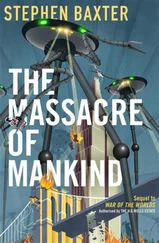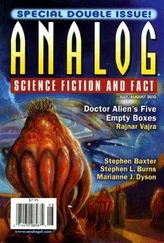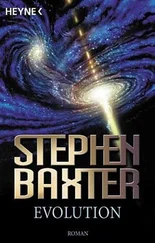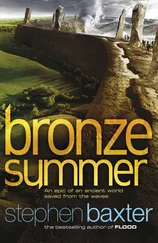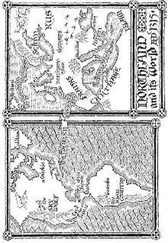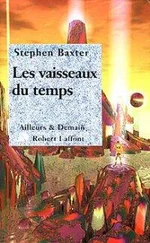Geena pointed out some of the sights. The Russians put together their boosters lying on their side, and then hauled them out by rail to the launch pad, to be erected by hydraulics. At launch the boosters actually sat on turntables; the rockets were much dumber than American designs, and had to be pointed like July 4 firecrackers to hit the right azimuth.
Most boosters, built by whatever nation, were launched to the east, the way the Earth rotated, to pick up a little extra energy. In case anything went wrong and the booster fell back, you needed a clear area to the east of your pad. That was why Canaveral had been built on the US east coast, with the whole Atlantic to drop rockets into.
Here, though, it was different. The Soviets had built their pads in the heart of their continent, with the empty belly of Asia stretching hundreds of miles to the east, a waterless ocean of rock and scrub.
But the place had seen better days, Henry learned. Baikonur was guarded by army recruits who were sometimes not paid for months on end, who had rioted several times, and who had been reduced to supplying their needs by looting the supplies for the cosmonauts loaded aboard the Space Station’s Progress resupply ships.
Reassuring.
They came to a small, insignificant building that turned out to be the cosmonauts” preparation block.
Henry got down from the bus. There were more people here, waiting to greet him: pad rats, he supposed. Geena nodded, smiled, quipped and shook hands. The pad rats were all wearing surgical-style facemasks, over which they stared at him. Even so he could tell not one of them was smiling at him.
They were led to a big room, something like a hospital ward. There were strip lights in the roof, and a gleaming tiled floor, and two couches; amid piles of equipment, more technicians in lab coats and facemasks waited for them.
With gentle tugs, the pad rats showed Henry he should strip naked once more. He unzipped his NASA flight suit and pulled off his underwear; it was crammed unceremoniously into a bag and removed, taking his human warmth, leaving him feeling shrivelled and exposed.
Now came another standing bath of alcohol, and he was handed more underwear to put on. A medic pulled a heavy belt closed around his waist, thick with equipment. He guessed there was a cardiograph in there, maybe something to measure his breathing.
And now a garment was lifted towards him by three pad rats.
“My God. It’s a spacesuit,” he said, wondering.
The pad rats looked back at him blankly.
The spacesuit was a floppy white mannequin, its limbs held stiffly out, as if it was already half-alive. Henry watched it approach, feeling a deep reluctance to climb inside. But the pad rats lifted and manipulated him as confidently as if they were packing a souvenir doll in Styrofoam.
The suit was open at the front, and the pad rats helped him slide his legs down through the stomach. There seemed to be two layers to the suit, an inner layer of some tough, rubbery material and an outer layer of a rough artificial fabric, coated with flaps, zippers and pockets. The rats lifted up the back and chest part of the suit, and he had to struggle to push his arms into the heavy sleeves.
When he was inside they lowered a helmet over his head, its visor open, and when it was locked at his neck they sealed up the hole in the suit through which he’d entered. The material at the front of the suit was pulled into a bunch, tied with a fat rubber band, and tucked inside his suit, which was then sealed up by two thick zips. It felt as if he had a cushion tucked under his shirt.
All this took place before a big glass window. Beyond the window there were rows of seats, filled by people with notebooks and cameras and tape recorders. The apparatus of the press. But there was little sense of urgency, and the seats were half-empty.
Maybe these weren’t really pressmen, he thought, but historians.
Or obituary writers.
He was helped to his feet, and he tried walking around. The suit was stiff, and every step required a conscious effort. Evidently the suit was internally wired for strength.
Geena, wrapped up in her own suit, was grinning at him.
Now he looked at Geena, he had to admit these Russian spacesuits looked pretty cool. They were basically all white, including their boots, with copper metal rings at neck and wrists for helmet and gloves, and the zippers making a neat V-shape at the front. They even had handy little pockets in their legs where you could store your gloves.
Geena said, “How do you feel?”
“Like John Glenn.”
“Don’t insult your suit,” Geena warned. “In space, it is your only true friend.”
A pad rat took hold of him now, and closed down his helmet. He felt it settle into the seal at its rim. The voices outside became indistinct murmurs, his own breathing sounded like a rattle. He felt as if he had been excluded from the outside world, shut away into this shell by the pad rats.
By contrast, they seemed to be swarming over Geena, touching her and beaming up into her smiling face, as if they were trying to root her to the Earth.
The pad rats connected his suit to an air pipe, and he heard a hiss as air was pumped in. He felt his ears pop; a pressure test, then. As the suit filled up the limbs became stiffer. Experimentally he tried to move an arm; it was like wearing a car tyre inner tube.
The pad rats, miming, showed him a knob on his chest. When he turned it, the high-pressure air hissed out, and he was allowed to flip up his visor.
He picked up his battered microscope box — it looked enjoyably unhygienic in this operating-theatre atmosphere — and he was led out of the building, to a kind of parade ground.
There were small white squares painted on the ground, like cue marks in a TV game show. Geena took one mark and pointed to the other, where Henry went to stand. There were people all around, pad rats and suited managers and technicians. Geena’s square was marked “KK’, and Henry’s “KI” — acronyms for mission commander and researcher, as it turned out.
Henry looked down at himself. His white spacesuit gleamed like snow in the sunshine.
A military man walked forward, decorated with ribbons and medals. Evidently an Air Force general. Geena saluted, spoke in Russian, and repeated in English. “My crew and I have been made ready, and now we are reporting that we are ready to fly.”
The general nodded, and spoke in thickly accented English. “I give you permission to fly.” He glanced at Henry, but seemed to look through him.
Geena nodded to Henry, and led him towards another bus, this one silver and blue. He had to walk past ranks of silent workers. Close to, many of them looked gaunt, underfed, dressed shabbily. Maybe they would normally cheer, he thought. Maybe they somehow resent me being here.
Or maybe they’re as scared as I am.
It was difficult to sit down on the bus in his stiff suit, but he made it. The bus pulled away with a lurch.
It wasn’t long before the rocket came into view.
The booster was a pillar, squat and solid: coal grey, save for an orange band at its mid-section, and a bulge at the top, a white-painted faring which hid the Soyuz capsule he would ride to orbit. At the base the booster flared gracefully, where four liquid-fuel rockets were strapped to the pencil-slim core stage.
It was a hundred and fifty feet tall. White vapour slid down its flanks, as if the booster were already rehearsing the great leap upwards it would take in just a few hours.
Its three big supporting gantries had already been tipped back, resting close to the ground, so that it was as if the rocket stood at the heart of a metal flower. He could see a slim tower with an elevator to carry the crew to their capsule. The whole stack stood on a sky-blue platform — it looked like some kind of mobile launcher — and a flame pit, a channel cut in the Earth and lined with concrete, stretched away around it.
Читать дальше
Конец ознакомительного отрывка
Купить книгу


